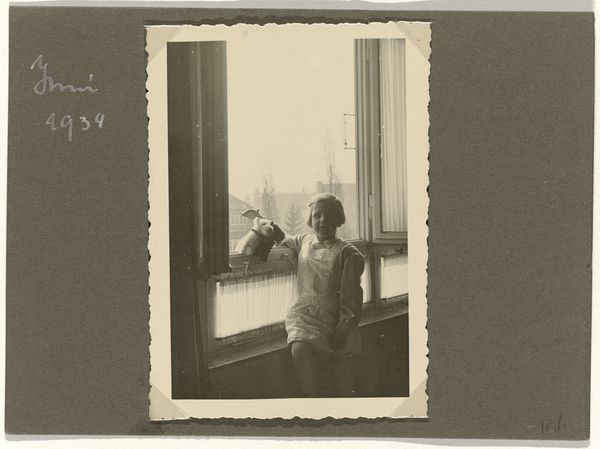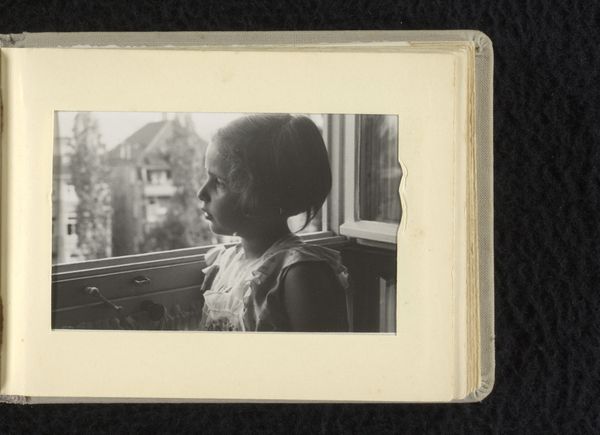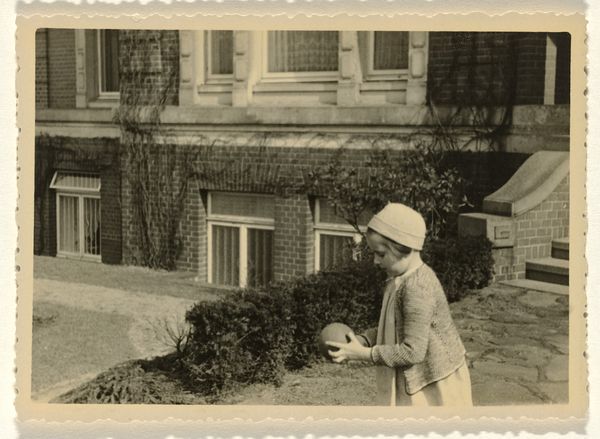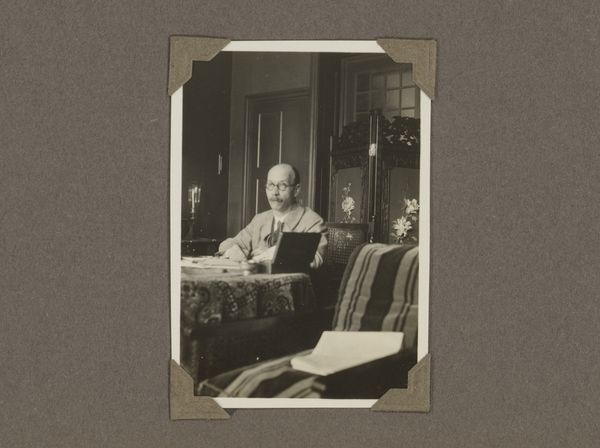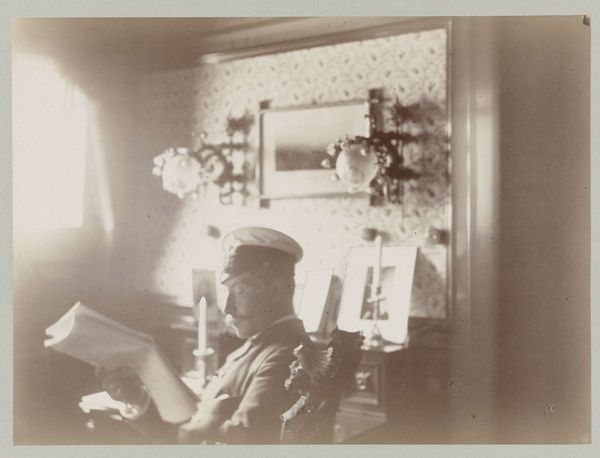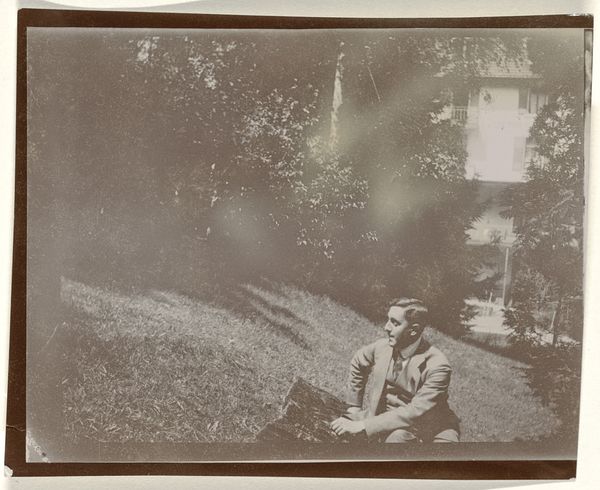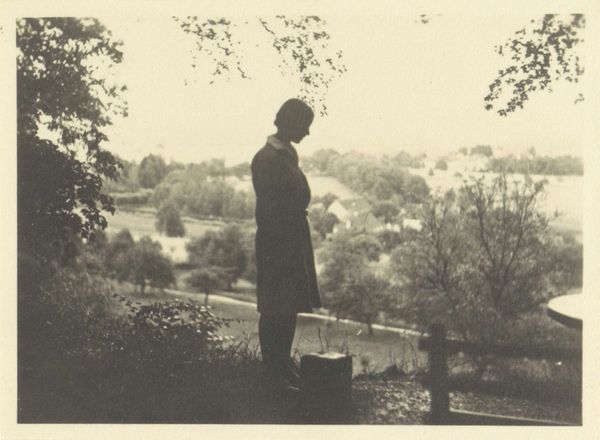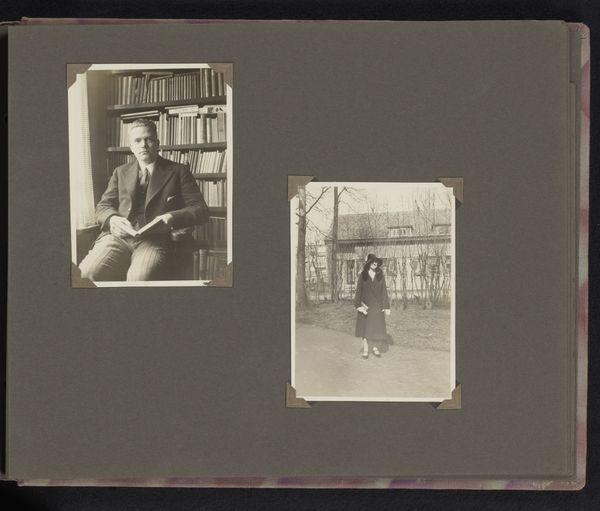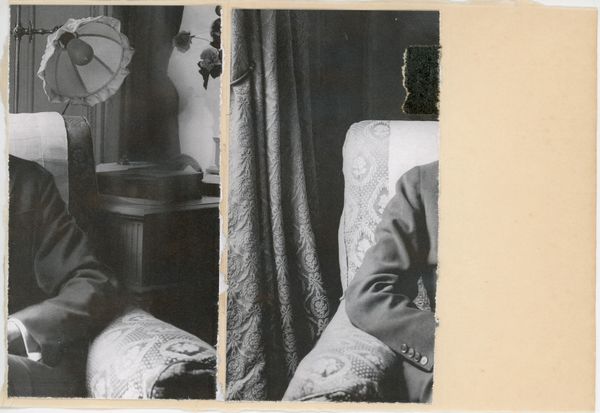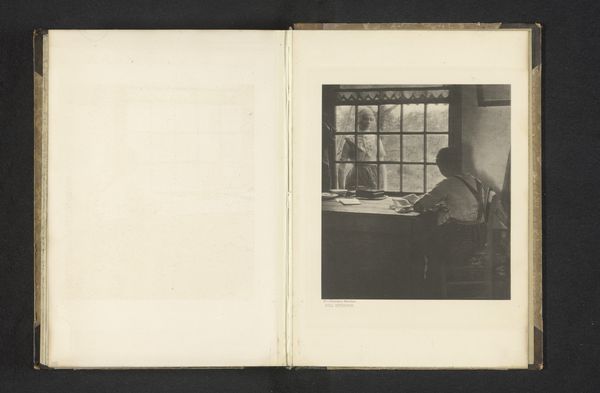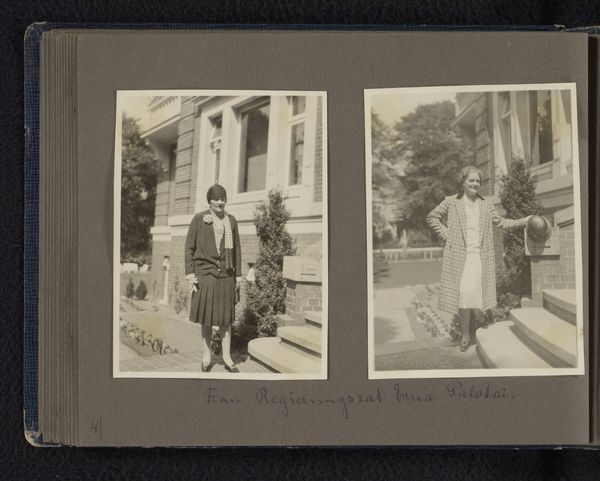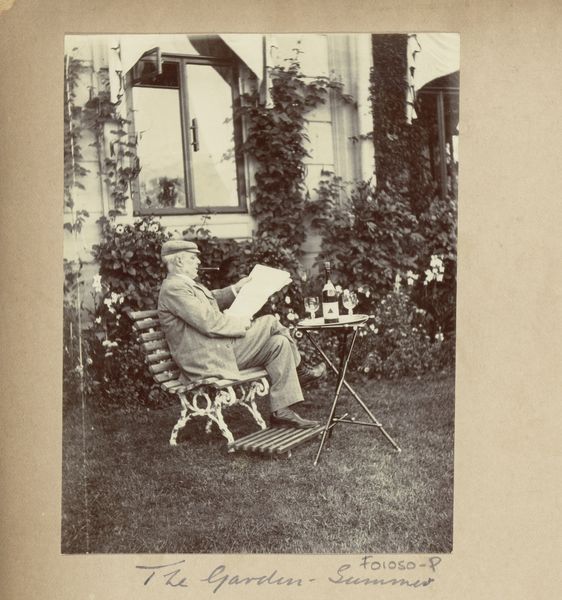
photography, gelatin-silver-print
#
portrait
#
landscape
#
photography
#
gelatin-silver-print
#
cityscape
#
modernism
#
realism
Dimensions: height 70 mm, width 100 mm
Copyright: Rijks Museum: Open Domain
Curator: This gelatin silver print, likely taken between 1934 and 1936, is titled "Isabel Wachenheimer met pluche beesten bij een open raam, juni 1934". It features a young girl with stuffed animals, posing by an open window overlooking a cityscape. Editor: My first impression is a quiet, almost melancholy scene. The sepia tones contribute to that, evoking a sense of nostalgia or perhaps even foreshadowing. She's in this liminal space, indoors and out. Curator: Absolutely. Consider the social backdrop: this photograph emerged during a volatile period in European history. The figure of Isabel, framed by domesticity yet gazing outward, raises complex questions of vulnerability and visibility. What kind of protections or limitations is this space providing? Editor: The window becomes a really interesting motif, a division between the private sphere of childhood—her toys, her room—and the world outside. Given that this was in 1934 and Isabel Wachenheimer sounds like a Jewish name, the image inevitably carries resonances of looming threats, the precariousness of her future and sense of place. Curator: It is indeed important to contextualize such details. How are identity and innocence portrayed within the political realities of the time? Is there a subtle critique of dominant social structures implicit in the photographic style itself, reflecting anxieties or resistance through the representation of its subject? Editor: It makes me think about how photographic portraiture in this era was so often deployed for specific ideological ends. It invites scrutiny. Where do images of innocence and domesticity intersect with the larger machinery of representation and control? There’s such stark tension. The window, normally associated with escape or expansion, is transformed here. Curator: Yes, by paying close attention to details—the framing, the light, even the texture of the print—we can tease out hidden narratives of power and resistance that reverberate into our present. The image stands as a powerful reminder of art's capacity to bear witness and prompt us to reconsider how the personal becomes intertwined with larger political landscapes. Editor: And it speaks, powerfully I think, to the hidden lives and untold stories of children often caught at the intersections of history, memory, and cultural upheaval. It makes one curious about Isabel and the untold narrative.
Comments
No comments
Be the first to comment and join the conversation on the ultimate creative platform.
